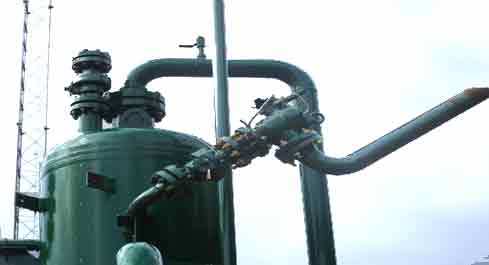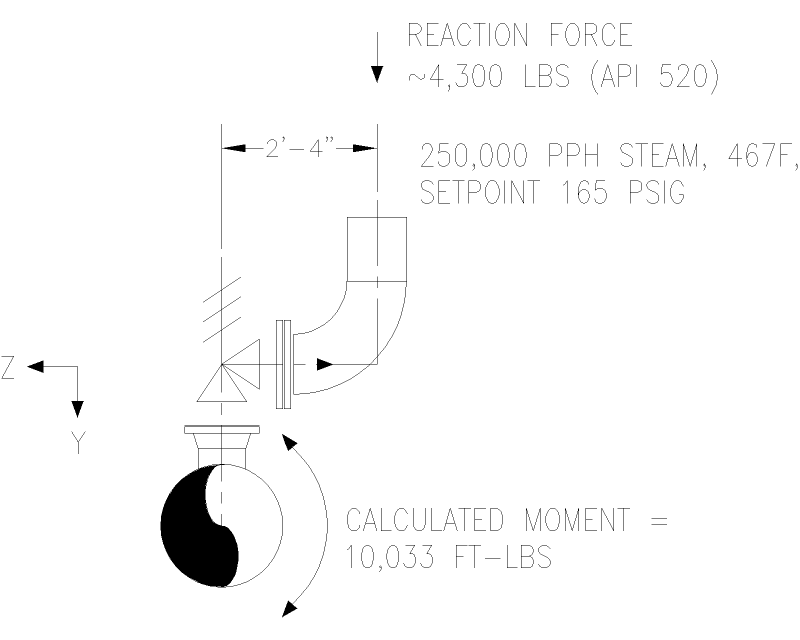I'm doing some analysis on a 24" steam line, it has an 8T10 safety mounted on top, side exit perpendicular to the pipe run with a 10" elbow turning vertically up and dumping into a 12" drip pan elbow. I calculated the API 520 Part II thrust force, and was just going to apply the moment created by the force x the offset distance (26") to the 24" pipe. But, do I also need to include the actual -Y-direction force on the pipe? I originally thought the moment was all I needed, but intuitively, since the force is close, it seem like it should be included also. If the force were 20 feet away, It would seem insignificant compared to the moment. Basic statics probably, but it's funny after 30 years how you can lose track of a few fundamentals....
Thanks for any feedback.
Thanks for any feedback.


